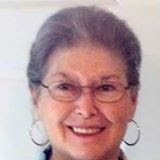Having just completed eight days of teaching a workshop on still life painting, the value of light has been very much discussed. Good paintings are a combination of good drawing, good composition, good use of color, good control of edges, good handling of the paint, and, very importantly, a good value scheme. Value is an element of art that refers to luminance or luminosity - the lightness or darkness of a color. Most beginning painters readily grasp value differences in monochromatic drawings or paintings, but they may have a harder time understanding value in color. Still harder is recognition of the fact that like objects, say oranges, may have different light values (those values that are in the light and not in the shadows) depending upon their distance from the light source, the focus of the light source (where the light is actually directed), and the quality of the light (how strong or weak it is) hitting each object.
In the above still-life setup, the orange on the left is receiving very little light; you can tell it is receiving light by the fact that it casts a relatively dim shadow and has a highlight, albeit not very bright. The two oranges on the right, however, are receiving strong light, as the hooded light was aimed directly at the peeled orange, which is receiving the very strongest light; the right-most orange is in the range of this strong light, but it is a little further away from the light and back behind the direct focus of the light. The light was set up this way deliberately to make the peeled orange the focal point of the painting. The painter must be sure to diminish (darken) the light values of the right-most orange in comparison to the light values on the peeled orange, and must diminish them considerably on the orange on the left if (s)he wants the peeled orange to remain the focal point. If the light values were the same from orange to orange, it would not be possible to follow the path of the light through the painting and all three oranges would compete for attention. If you look at the photo, you should be able to tell that the peeled orange is the focal point. It is important to note that if the peeled orange wasn't peeled, the lightest value would be lighter and the highlight would be stronger than on the orange to the right of it and even more so than the orange on the left.
Workshop Paintings (click to enlarge):
 Rene Abney
Rene Abney Gretchen Wurth
Gretchen Wurth Mary Bryson
Mary Bryson Carol Parks
Carol Parks Bhupinder Obhrai
Bhupinder Obhrai  Molly, Carol, Mary Working
Molly, Carol, Mary Working Molly, her painting, her setup
Molly, her painting, her setup Mary Bryson
Mary BrysonSorry. I am missing works by Bert Schafer and Charley Kelso




